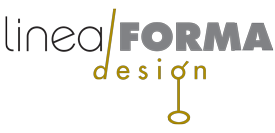There are so many decisions to make in the creation of product marketing tools. I’ve covered many of them in previous posts. Today, let’s talk about reality.
A product image typically demonstrates either specific features or functions. It must be recognizable, of course, but what level of realism will work best with your presentation? Let’s get real, shall we?
FEATURES
Presenting features in 2D illustrations can be as simple as text with a line pointing to the specific component. It is very direct communication:

In a photograph, everything in the scene EXCEPT the specific feature is often desaturated or faded a little bit to make the feature stand out more:

Animation adds the benefit of a changing viewpoint to a presentation. So, for example, the background elements fading out in the photo example above can now fade out momentarily and then back in, to clarify a feature; or the feature can be demonstrated by animating its specific behaviors.
There are always exceptions to the rule, so I’m being general here, but for presentation of specific product features, whatever level of realism the full object is presented is the same level the featured component is presented, not more or less real. The viewer’s eye has to see the relationships between everything connected — clearly and quickly—and instantly make sense of it.
The view can be zoomed in to magnify the feature’s details as long as the scale of everything in the scene matches. Showing extremely magnified layers of material in an insulated ski jacket fabric would be an example. If the scale of the feature image is larger than the main image, put it in it’s own frame, like a square or circle near the main image:

FUNCTIONS
Presenting functions generally requires animation since a function usually includes a movement of some sort. Where a feature might be as simple as a color or texture, demonstrating a function can be a very complex creative process. And the level of realism for presenting each component involved in the function can vary to fit the story, and level of importance.
If the function is a simple mechanical process, like rotation, sliding, opening and closing, changing position, or any other basic movement, the level of realism stays the same for everything. Nothing in the process would change the look of the objects:
But if the function is less perceivable or clear, sometimes reality needs to change, and the presentation of realism can be more abstract, like in showing microscopic, scientific processes.
For a recent project, we needed to show how one brand of centrifuge tube cap keeps CO2 from entering the tube, while others do not, causing lab samples to change their pH balance. So, the function is: CO2 blockage. But, although CO2 has no visible shape, when it comes into contact with a lab sample, it changes the sample’s pH balance and its color. So how does the observer understand what happened? For the successful tube and cap, nothing happened. And that demonstrated the function perfectly:
For the unsuccessful tubes, we used several visual clues. CO2 in the form of blurry type, floats up from dry ice below. Inside the tubes we built models of CO2 molecules floating around, we added a color gradient that moved downward inside, and when it hit the lab sample, the sample changed color. Abstract meets realism. And it works!
If you need effective product marketing, get real and give me a call!
Share this:


7 Responses
travis giobbi
Stupid CO2, it ruins everything. Except for plant life, I guess. But that’s neither here nor there…
For all things not “real” to the human eye, call on Linea Forma to make them a reality.
bgob1
Presto!
Elisa Mills
Pronto!
Sis G
Excellent read, as usual. Always learn something, and always wish I could put your skills to use!
bgob1
Thanks, G. It’s still fun.
Scott Jones
Consistently brilliant. Starting to annoy me a bit. I feel very inadequate when I read Bill’s posts. I love and admire Bill. But.. I’m gonna go eat worms now. Very interesting piece Willie.
bgob1
Scott, you are WAY too kind. But thanks.